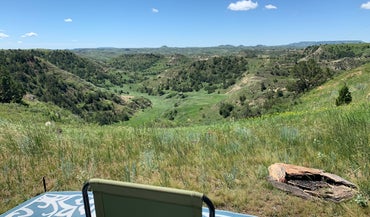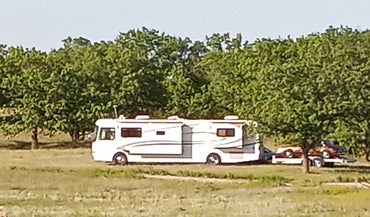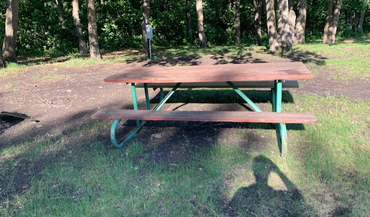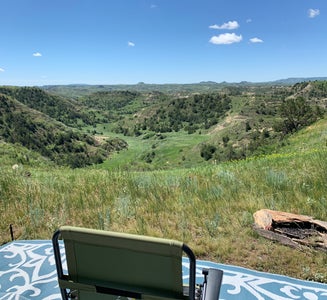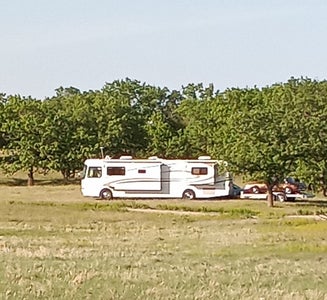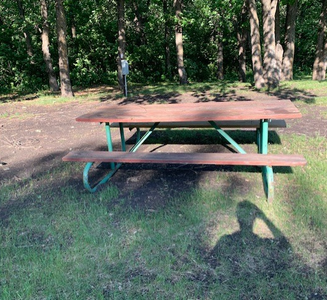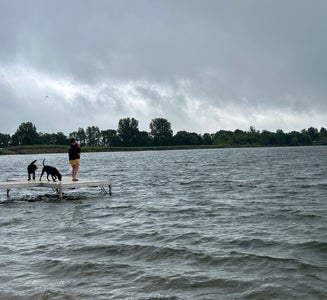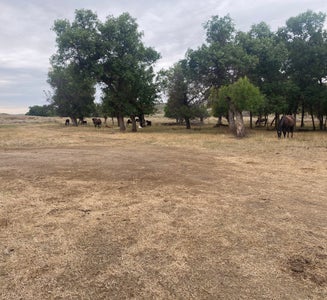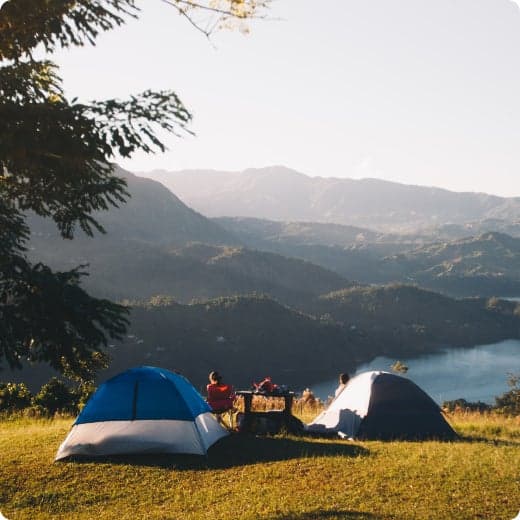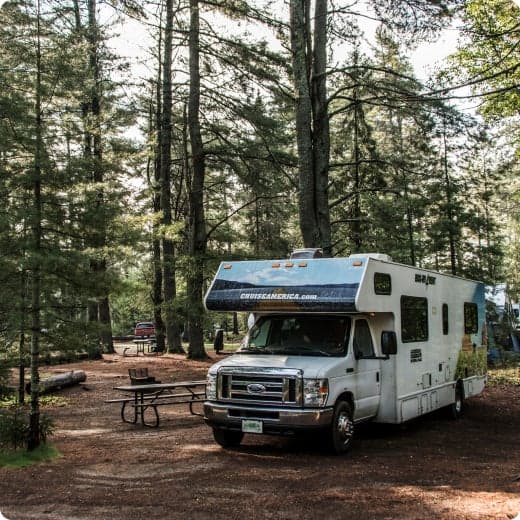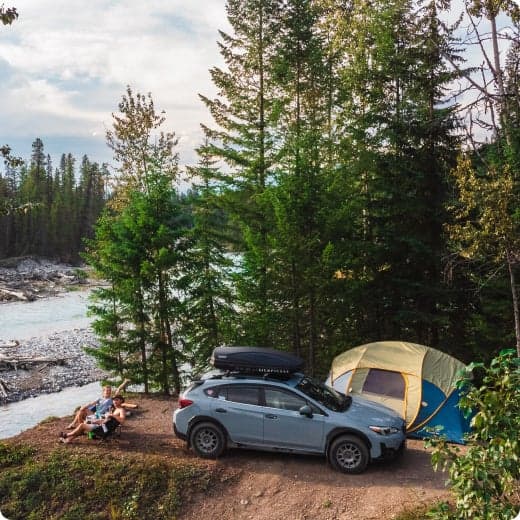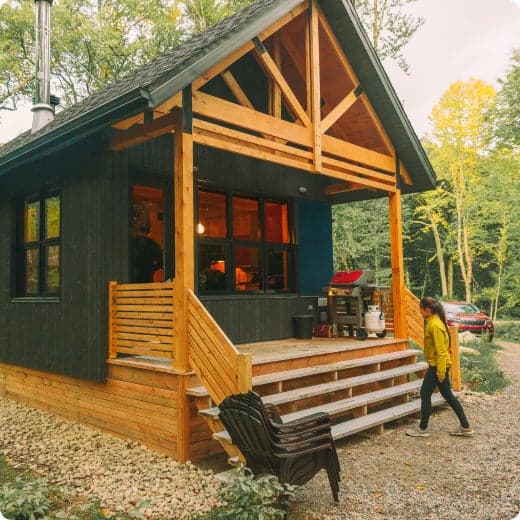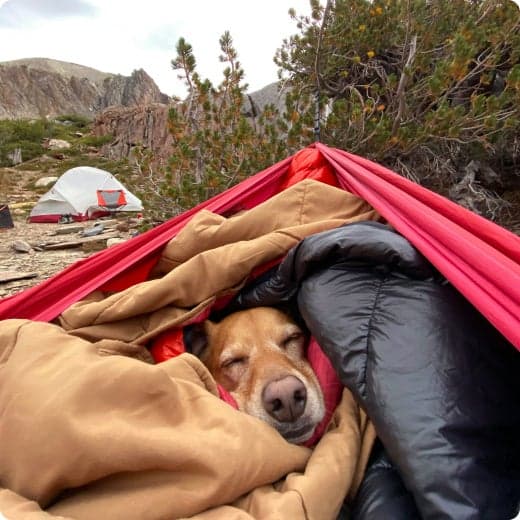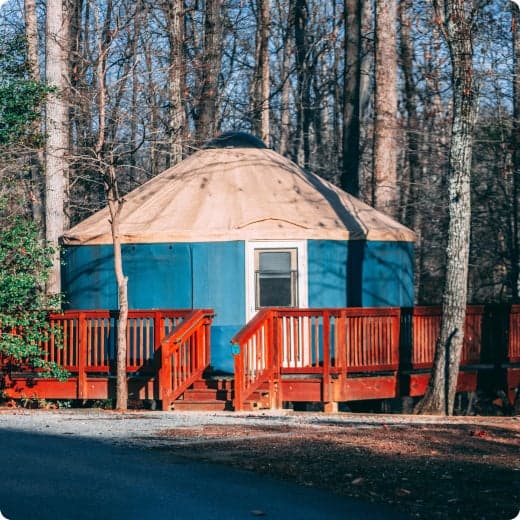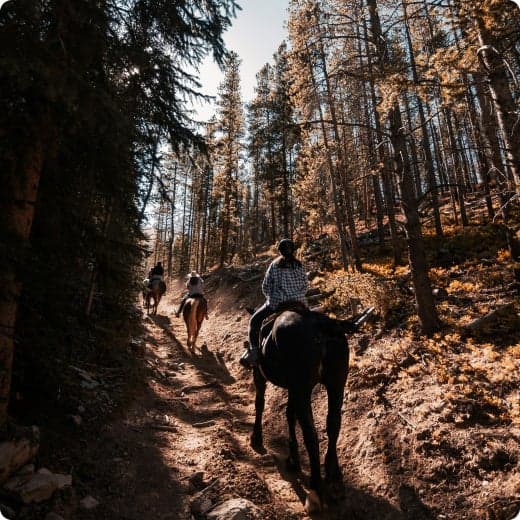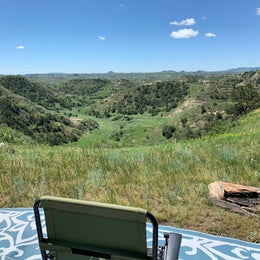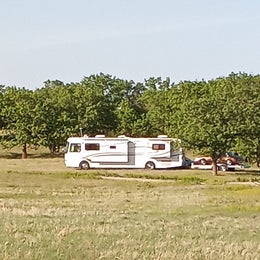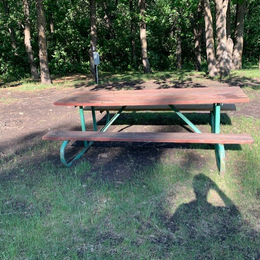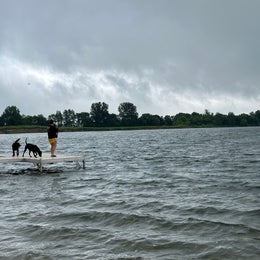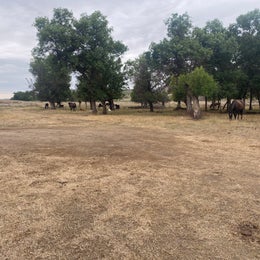Many people enjoy the solitude and primitive experience of camping away from developed campgrounds and other campers. Dispersed camping is the term used for camping anywhere in the National Grasslands OUTSIDE of a designated campground. Dispersed camping means there are no toilets, no picnic tables, no trash cans, no treated water, and no fire grates. Typically, dispersed camping is NOT allowed in the vicinity of developed recreation areas such as campgrounds, boat ramps, picnic areas or trailheads. There are extra responsibilities and skills that are necessary for dispersed camping. It's your responsibility to know these before you try this new experience.
Driving cross-country (off a road or trail) by motorized, wheeled vehicles is prohibited in the National Grasslands. Along certain roads, vehicles may drive up to 300 feet off road to camp. These roads are shown on the Grassland's Motor Vehicle Use Map.
Picking a Campsite
If you are going to an area where others have camped before, pick a site that's been used before. Plants, soil and wildlife are impacted by new campsites, so using existing ones will minimize your impact on the grassland. If there is no existing campsite, then follow these Leave No Trace guidelines:
Camp on bare soil if possible, to avoid damaging or killing plants and grass.
Do NOT camp within 200 feet of any water source, plants near water are especially fragile.
Don't camp in the middle of a pasture or clearing. Make your campsite less visible so that other visitors will see a "wild" setting.
Campfires
Many wildfires are caused by human activity, typically escaped campfires from dispersed campers. Campfires are allowed when you are dispersed camping UNLESS there are fire restrictions in effect due to high fire danger conditions. It is YOUR responsibility to know if fire restrictions are in effect before you go camping.
Use existing fire rings if they exist. Minimize the scarring of new rocks, soil and plants by using existing fire rings.
Clear an area of combustible material six feet away from a campfire to reduce the chance of it spreading into a wildfire.
NEVER LEAVE A FIRE UNATTENDED.
You should have a bucket, shovel, and axe available to control or extinguish escaped fire.
BEFORE YOU LEAVE YOUR CAMPFIRE, MAKE SURE IT IS DEAD OUT. You should be able to put your whole hand into the ashes without being burned and it should be cool to the touch.
Protect Water Quality
Water gets contaminated by visitors who don't take care of their human waste or their garbage and food properly.
To dispose of feces, dig a hole 6 inches deep and AT LEAST 200 FEET AWAY FROM ANY WATER SOURCE (creeks, wetlands, springs, or lakes).
When you're done, fill the hole with the dirt you dug up and take your toilet paper with you to dispose of in a proper waste container.
Never defecate or leave toilet paper on top of the ground, it could easily get into the local water source and contaminate it.
Wash your body, dishes, etc., and dispose of waste water AT LEAST 200 FEET AWAY FROM ANY WATER SOURCE.
Do not use ANY soap directly in a water source.
Use biodegradable soap.

